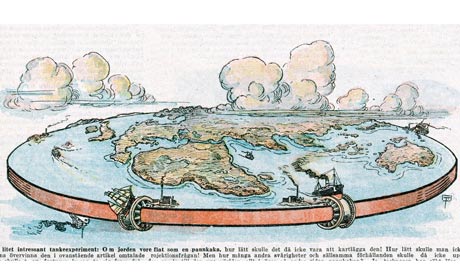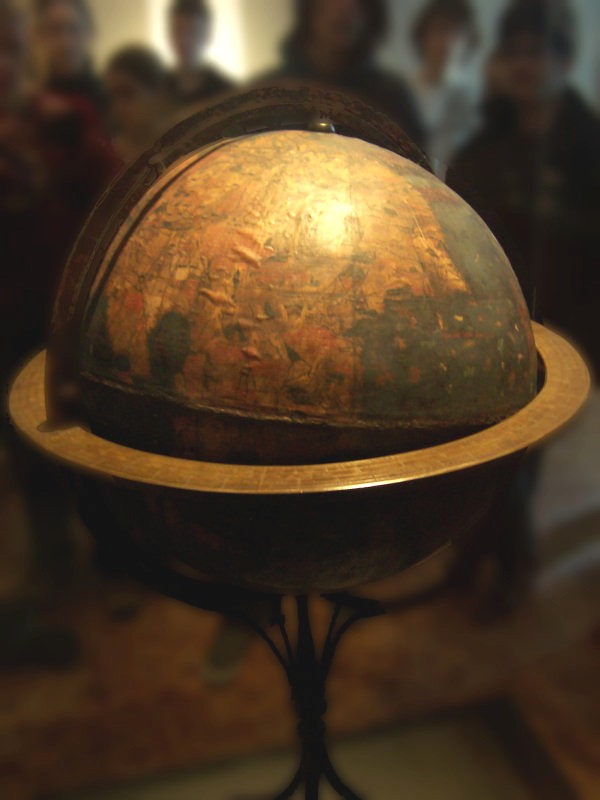But the observations didn't match the predictions of the proposed geocentric system. The first signs of the system being non-consistent were the movements of the Sun's nearest planets : Mercury and Venus. From our view they will always be close to the sun, we will never see them in an opposition position (when the Earth is exactly between the planet and the sun). They not only seem to travel next to the sun, but also moving back and forth around it.
Heraclides(-388 to -310),Greek philosopher and astronomer, proposed that Venus and Mercury revolve around the sun, and so he changed the geocentric system. He would also have been one of the first to support the thesis that the Earth revolves es around an axis of rotation, unlike Aristotle, who assumed that the celestial sphere revolved around the Earth,the Earth itself remaining immutable.
 |
| Adapted geocentric system by Heraclides |
An other problem is that sometimes planets happen to be in an apparent retrograding motion, which does not fit to their supposedly circular motion. This happens during opposition position. As the Earth is rotating faster than the outer planets, during opposition the Earth is "overtaking" the outer planet (for example Mars), and the planet appears to move backwards in front of our starfield.
 |
| Self-made animation to show the apparent trajectory of an outer planet during opposition position |
Aristarchus of Samos (-310 / -230), Greek astronomer and mathematician, was the first known man who placed the sun in the center of the universe. He assumed that the Earth rotates on its axis and around the Sun, but his ideas were considered unclean and were therefore rejected.
There is a hint that Heraclides preceded him, through an indirect source : according to Simplicia of Sicilia (490 - 560 AD), Heraclides proposed that the irregular movements of the planets could be explained if the earth moves while the sun stays still.
As I mentioned in the previous post, Ptolemy (90 - 168 AD), a greco-roman mathematician, astronomer, geographer, astrologer and poet of Alexandria, adopted Aristotle's view. He tried to explain the strange behavoir of the planets by assuming that they are moving on epicylces, revolving along a deferent. He observed also that even then the movements of the planets were not regular, they apparently did not turn steadily and circularly around the Earth. So he did a quite complicated model where he placed the Earth away from the center of the system, the center being in the middle between the Earth and an imaginary point named the equant. Note that the Earth and the equant did not move in this system. Now, he supposed that viewed from the equant the planets, respectively the center of their epicycle would appear to move at a steady speed. Which means that they did not move uniformly on the deferent.
 |
| Ptolemy's view of the movements of the planets |
In order to keep his system coherent with the celestial orbs, Ptolemy considered the orbs to be thick spherical slices rather than a thin sphere. In each slice would be another one in which the planets were located. His geocentric system was more detailed and more accurate than other modes before. His model was almost universally accepted until the 16th century.




